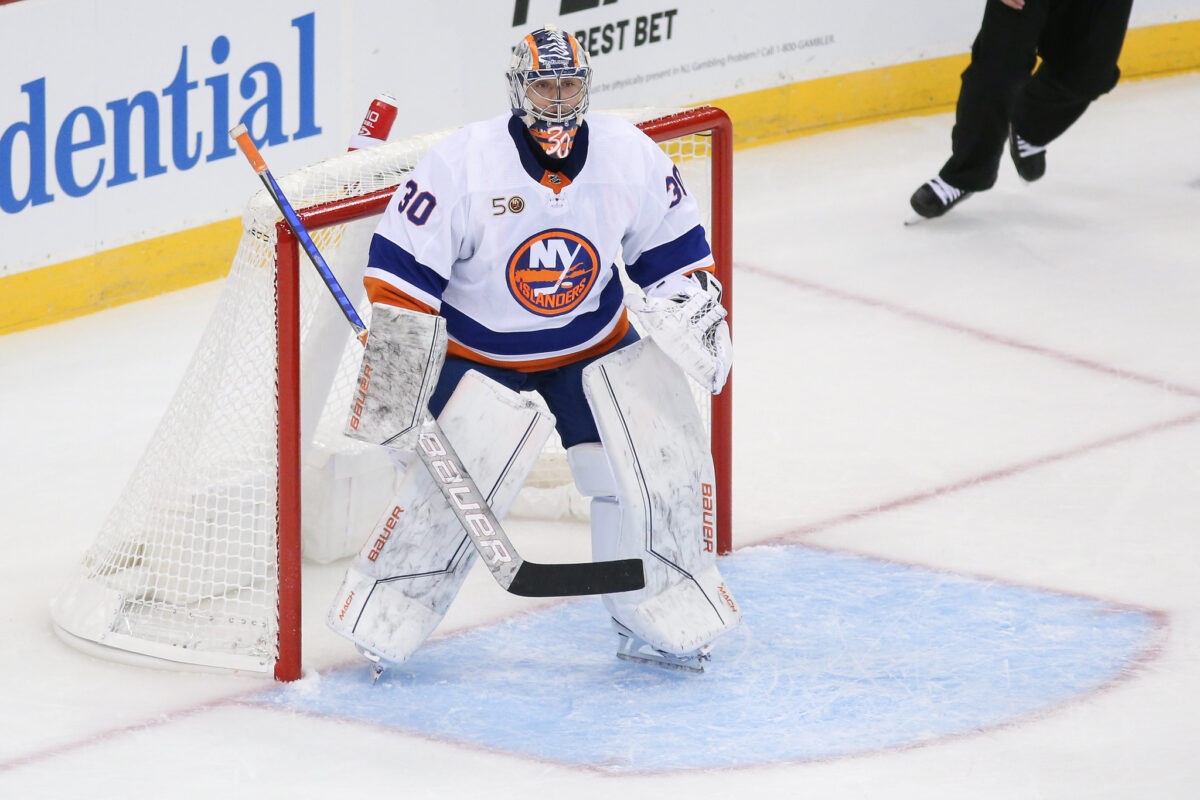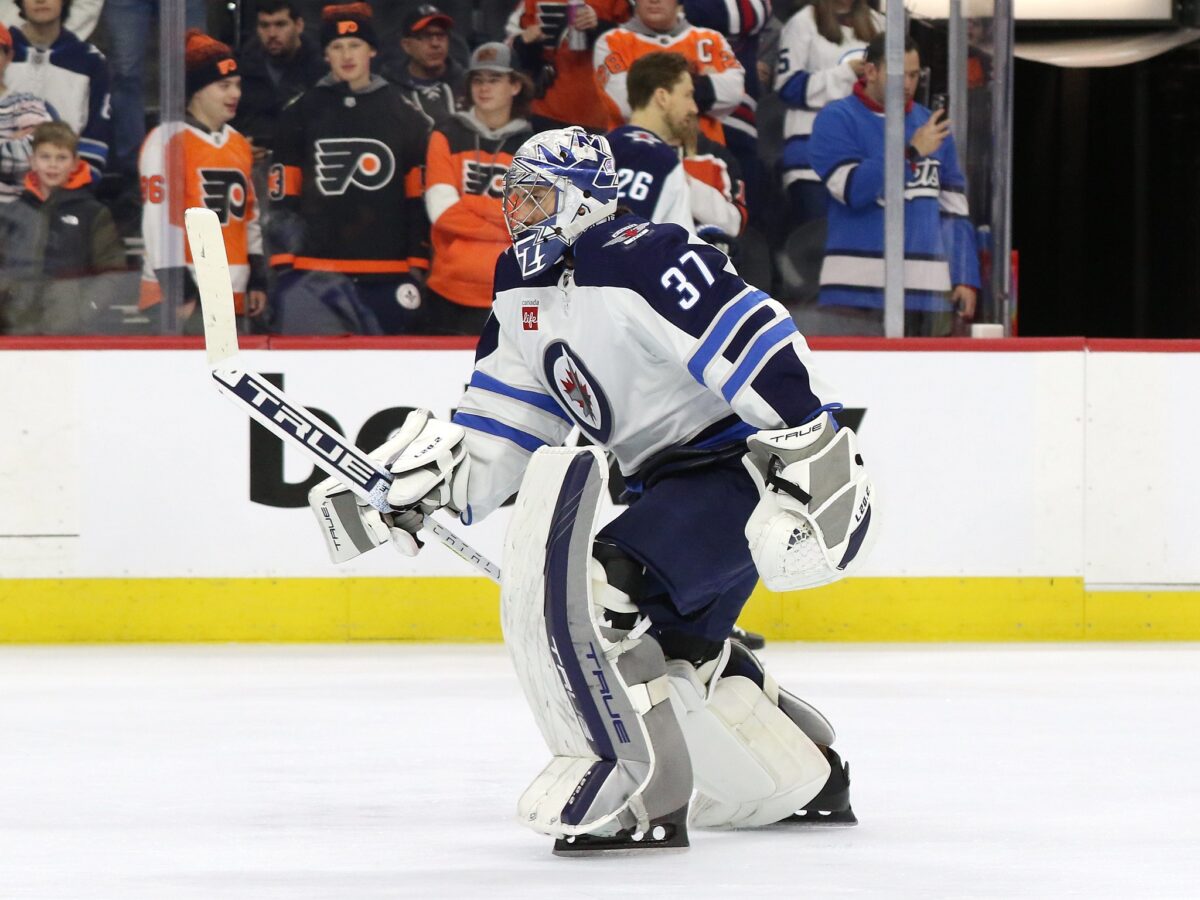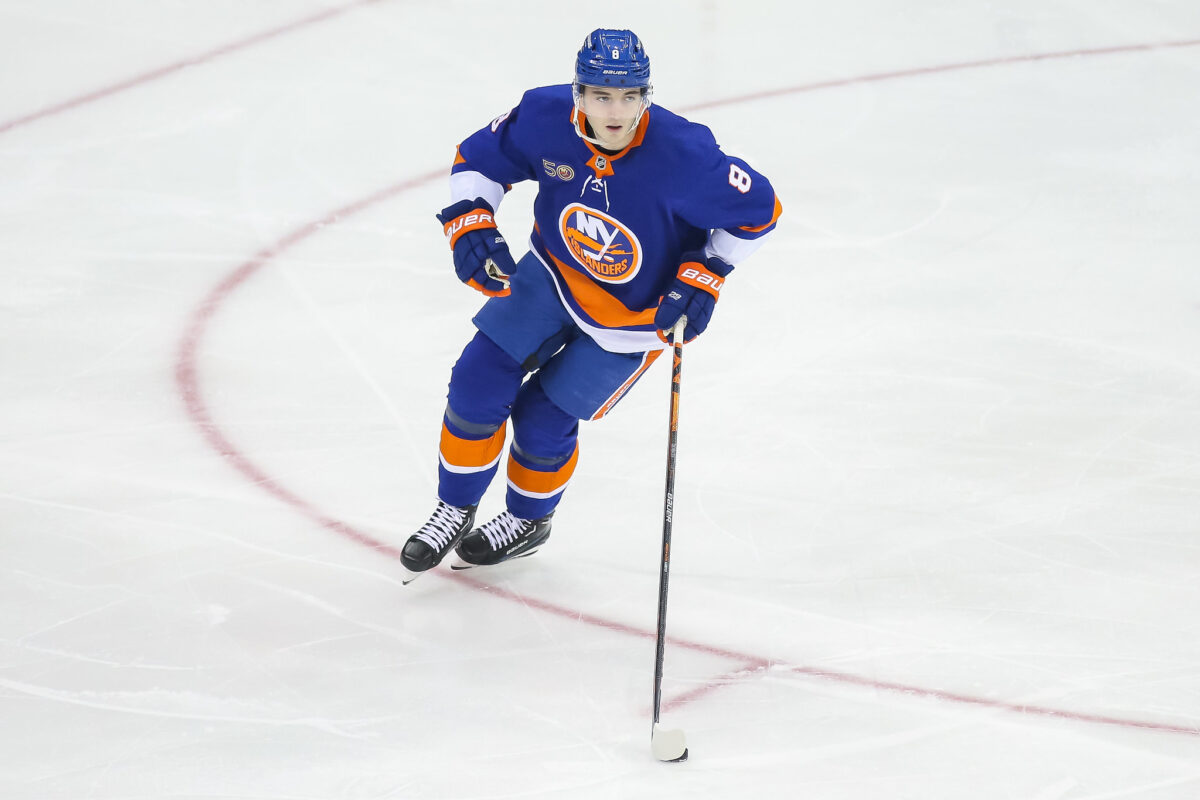When a goaltender with Vezina Trophy aspirations has a .909 save percentage (SV%) and a 3.15 goals-against average (GAA) halfway through the season, it means he’s had a rough start. Ilya Sorokin’s baseline stats indicate just that, but he’s managed to keep the New York Islanders in games. How so? He’s putting up underwhelming numbers while facing an unprecedented 1034 shots.

Sorokin is still playing at a high level, but he’s being overworked during games and in games played. The Jan. 15 loss to the Minnesota Wild was another reminder of this when he made 29 saves but didn’t receive any help from the rest of the roster, resulting in a 5-0 stomping.
Related: Winnipeg Jets’ Defensive Dominance Reaching Historical Levels
The Islanders’ next opponent will be the Winnipeg Jets on Jan. 16, a team that looks like one of the best in the Western Conference and is led by an elite goaltender. Connor Hellebuyck has a .924 SV% and a 2.19 GAA on 896 shots with a league-leading 18.8 goals saved above average (GSAA), putting him on pace to take home his second career Vezina Trophy.

The gap between Sorokin and Hellebuyck seems significant, yet both are in the same tier. Last season, they were finalists for the Vezina, and throughout their careers, they’ve proven they are among the league’s elite. Sorokin is in a rough patch, something Hellebuyck experienced earlier in his career, and the Islanders must address it to allow him to bounce back this season and regain his dominant form.
Islanders Must Limit Volume & Workload
The Jets from 2018-19 until last season are a mirror image of the team the Islanders are now. They were overconfident in their goaltender’s abilities and expected Hellebuyck to bail them out – he was, after all, one of the best goaltenders in the league. He led the league in shots faced four seasons in a row, including his Vezina Trophy-winning season in 2019-20. Eventually, the volume got to Hellebuyck as he struggled in 2021-22 along with the rest of the Jets roster, and the team missed the playoffs while head coach Paul Maurice was replaced by Rick Bowness.

The Islanders are allowing opponents to not only generate shots on net, but they are also getting effective shots on Sorokin. The shots in the high-danger areas, second-chance shots, chances on the rush, and open looks off of blown assignments are all commonplace. Sorokin has held his own, but he can only do so much, and in his case, when he bends, he breaks.

Sorokin’s allowed five or more goals six times this season. He’s allowed four or more goals 15 times, which is nearly half his starts. Opponents pressure him, and if the Islanders don’t help him out, he’ll eventually give out and allow multiple goals. Sorokin not only needs a defense that can limit shots on net, but he also needs a lighter workload overall.
The problem is that Semyon Varlamov, who typically gives Sorokin an occasional night off, is on injured reserve. Varlamov wasn’t the type of backup who would split starts but could provide a strong start and keep their star goaltender well-rested for tough stretches like the one the Islanders are currently going through.
Now, the team is left with Sorokin, who they can continue to rely on even though the workload is getting to him, or they can turn to Ken Appleby, a journeyman backup who spent most of this season in the American Hockey League (AHL). Presumably, they’ll stick with their primary starter, and it will require them to help him out in alternative ways.
Islanders Must Force The Opposing Offenses Hand
The Islanders’ defensive unit isn’t what it used to be. Injuries have played a role, with Ryan Pulock out of the lineup and Adam Pelech only recently returning, but the same skaters that made the unit great a few seasons ago are struggling. Scott Mayfield signed a seven-year contract this offseason but is playing at a slower pace and struggling to cut off angles to the net the way he did a few seasons back. Noah Dobson is having a remarkable season, especially offensively, with six goals and 37 assists, but like Sorokin, he’s overworked, and it’s affecting his defensive play.

The Islanders have the players to turn the defense around, but can they play a more disciplined game or even take a more methodical approach down the stretch? Pelech and Puluck were great at taking away angles on the rush and playing gap-sound defense in their zone. When they both return to the lineup, they have to bring that back to the unit.
Dobson and Alexander Romanov play a more aggressive style, but they need to use their speed to their advantage and dare the opposition to make a quick decision. When the opponent has the puck in space, Dobson and Romanov can force them to take a direct shot on net or make a difficult pass in the offensive zone.
All this will help Sorokin. Even if the defense is aggressive, it will dare opponents to react on the fly and take difficult shots. Turning the Jets’ defensive unit into a strength was the best thing to happen to Hellebuyck, and the Islanders need to do the same to help out Sorokin.
Islanders Must Change Style Of Play
When Kyle Connor was placed on injured reserve, the Jets were expected to fall to the bottom of the standings. Without their top scorer and arguably their best player, it seemed like a tall task for them to continue to pile up the wins. That is, until they pivoted into a defense-first team. The transformation was already happening under Bowness at the start of last season, but it became a necessity once they realized it was how they would win games.
Since Dec. 13, the Jets have gone 12-1-2, led by Hellebuyck and a suffocating defense that has averaged 1.66 goals against per game in that 15-game span. They’ve slowed games down and, more importantly, have played a zone-focused defensive style that has prevented opponents from finding many scoring chances. The defensive unit has a lot of talent (and a lot of Dylans) to make it work, yet the entire team has bought into the system, allowing them to dominate games.

Asking the Islanders to change their system sounds like a demand for a change in coaching staff. They went from Barry Trotz, who slowed games down and won low-scoring games, to Lane Lambert, who has sped things up to the point that no lead is safe. The Islanders don’t need to go that far, even with Lambert under constant pressure to be replaced, particularly after the recent loss to the Wild. Instead, they must pivot as they did last season to reach the playoffs.
When Mathew Barzal went down with an injury in the second half of the 2022-23 season, the Islanders relied on their defense and goaltending to reach the playoffs. They slowed games down and willed their way to victories. This season, they don’t have an injury forcing them to pivot. Rather, it’s the issues in net that require changes.
What Changes Might The Islanders Make
The pressure falls on Lambert to help Sorokin out. If the defense continues to let him down, the Islanders might turn to Appleby for a full start, a signal that they are willing to lose a battle to win the war. Sorokin’s willing to start every game down the stretch, but the Islanders have to be wary of him wearing down, which might already be happening halfway through the season.
If things don’t change, the Islanders might see another big move from general manager (GM) Lou Lamoriello ahead of the trade deadline. He already tried to address the defensive woes with the addition of Mike Reilly and the acquisition of Robert Bortuzzo, and he could make another trade to help turn the unit around. Bortuzzo’s injury didn’t help the cause, but Reilly’s been a reliable later-pairing option. For Lamoriello, it’s about finding another veteran who can play the shooting lanes and prevent opponents from easily finding open shots on net.
Sorokin is having a rough season, but he is far from the problem. On the contrary. Without him, the Islanders aren’t close to contention. After Hellebuyck’s rough 2021-22 season, it was unclear if he could lead the Jets back to contention, but with the right pieces around him, they look like the team to beat in the Western Conference. The Islanders are only a few players away from a similar trajectory in the Eastern Conference.